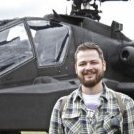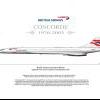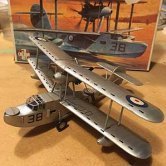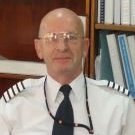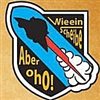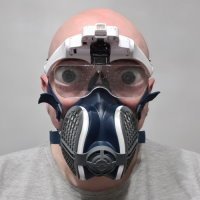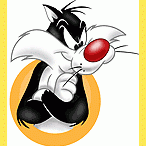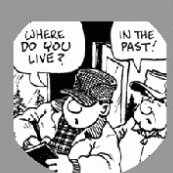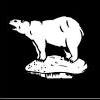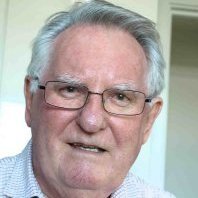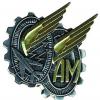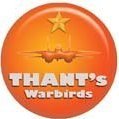Leaderboard
Popular Content
Showing content with the highest reputation on 25/07/21 in all areas
-
Hi, me again. With an NHS track and trace internment enforced, its into the shed for 10 days of merriment. What better way to cleanse the modelling palette after the pig's ear of an Airfix kit than a modern day, bang up to date release of this iconic ground attack aircraft. The kit has to be the easiest build I've had in a good long while. Its not Tamiya F-14 but it comes a close run contender for my kit of the year. I only added the Eduard seat belt set (ZOOM), the Eduard Canopy set (cos i'm lazy) and the utterly brilliant Two Bobs decals in a bright scheme. I'd highly recommend this kit and especially after seeing Spencer Pollards build and Ric Greenwoods Youtube build, I was keen as. A mixture of Hataka and Tamiya paints used, with Galaria Satin coat giving the final finish i was looking for. Now on to the Hobby boss MH-22B...43 points
-
Here's my long term love/hate and hate a bit more Airfix 1/24 scale, Sea Harrier FRS1 of 801 Naval Air Squadron, embarked on HMS Invincible 1984. I have to say I'm not a great Airfix fan at the best of times but needs must when you love the FRS1 and building big planes. This has taken the best part of 6 years and has languished beyond the shelf of doom, in the dark depths beneath my work bench. Overtime I went to spray at my spray booth, it would tap me on my knees, just to say it was still there. The basic kit looks like a FRS1 and so that's good for me, I did add a plethora of Heritage bits and the Flightpath Aftermarket set (lots of this I still have as I'm not totally taken with it) that said its the only one so I picked what I wanted and the rest stays in the box. the kit fought me all the way and without Nick G I would have probably binned it, so thanks Nick and the IPMS UK Harrier SIG, for inspiration at every SMW to get on with it. It isn't my best but its finished...30 points
-
I'm afraid I've been absent from BM for sometime because finishing this became an obsession..... I started it for the Africa Group Build back in February. Everything was going really well until I started applying the decals. Let's just say that everything literally went South.... I never managed to finish the build in time, but I had gone too far to bin it. which was my first inclination. Anyway, not quite the finish I had hoped for, but what's done, is done. Link to the build process can be found here : 1/72 SAAF Buccaneet (Airfix) - run aground..... Thanks for looking mike24 points
-
Hi This is the very old Monogram 1/48 Do 335 A which has been modified to a B-2. I had to scribe each of the panel lines, make new gun pods for the wings and a few other small modifications. It's also got a new front windscreen but it's been in the sun hence why the clear plastic has discolored, lesson learnt. I've got the Tamiya Do 335 nearly completed so I hope to show that one soon, regards. Trace18 points
-
Kit - Academy. Paint - All Tamiya acrylics. Decals - Star 35 C 1149. Extras - Stowage from spares box. M7 Priest HMC 98th Field Regt. Italy, Summer 1943 Bought on impulse about eighteen months ago, not a huge fan of artillery builds but I had the decals already so I decided 'why not'. It's not one of Academys better kits, when this was issued, I'm guessing that the M3/M4 generic moulds were getting a little tired, no matter the lower hull builds quickly and easily, the interior is not 'the last word' but busy enough and the upper hull, well you need to be vigilant as you're bringing it together as there are gaps which can turn in to chasms if you're unlucky. Painting was a bit of a hike as I needed to get the fighting compartment base painting and fading done, then the dark green camo on the outside which was masked then the 'pink' for the outside sprayed and matched to the interior - probably created more work for m'self doing it that way around, I just didn't fancy cutting the camo masks to protect the 'pink'... much easier to protect the dark green. I didn't use 'exact' tones, I applied my favourite Mk.I eyeball method... on its own it looks perfectly fine but alongside my M3 Scout Car from last year it looks really pink !!. That said, GO 1650 of December '42 did specify - "The basic colour common to whole of MEF is designated 'Desert Pink' - the disruptive patterns will be in Dark Green (PF No.1)..." The directive 'officially' was recinded in April '43 ahead of the Italian invasion but it took time for all the vehicles to be re-painted in the new Light Mud & Blue/Black colours. So that's it, please feel free to ask any questions, hurl any abuse or make any comments. Next AFV on the bench will be an M3 Lee in late war SCC13 Jungle Green, and given the multi-faceted hull, I will probably go down the full-modulation route with the paint finish. All the best from New Zealand. Ian.17 points
-
Bonus episode this week. First, the pigeon post Thanks LS, she's a mother all right Stunning as I can say that I'm a bit dazed by it all? Oh I just knew you were going to stick your oar in and come up with that suggestion Tony . It has been seriously contemplated by the inner workings of the Hendacranium and I have made headway on producing a former for the buck. To be honest, the reason I didn't just go right there in the first place is that I have never had any luck producing a clear vac-form. Any other vac-form and it's Zap, Suck, and Bob's yer uncle. Clear? Never works for me, but I'll give it a go just so you lot can have a laugh Bill - you are the MASTER of producing clear canopies from a rabbits bum. I can't even end up with a clear canopy when I start off with a clear canopy The canopy issues could well be of my own making Colin. I seem to remember that I did some test fits early on before I started hacking about things. I don't remember anything untoward at that time. I could well have forced the fuselage a little wider jamming all that interior in there though it seemed to fit without any issues, and I didn't have any problems closing it up. More on those wheels later in this episode Pitfalls? Nah. The occasional mineshaft and some abrupt sink holes to be sure. Thanks Ian. Aren't you supposed to blether something about great minds thinking alike? Thanks SD. More desperate than inventive but we keep ploughing on Thanks to Ian's telepathic suggestion, the front windows got a spar of donor plastic down the middle to widen the overall frame. Now both the port and the starboard side line up. But we have a little bit of a step here at the front. Where did that come from? Doesn't really matter does it cos it looks like it's here to stay now Prior to the oh why don't you just vacuform a new one chorus, I added a thin strip of BMF down the center to see if I could get away with using the kit part (in a push of course). I dunno who keeps letting these elephants into the room but there's only me here so I keep having to deal with them, one bite at a time. That windscreen step isn't going anywhere so it made sense to deal with it before I get too involved in something else. Surface prep Surface slobber The milliput was smoothed down as much as possible and left for an hour or so before I attempted to remove the windscreen. It came away leaving a good seam though there's always going to be some more seaming and sanding when it comes time to fit the chosen option, be it kit part or vacu-form. The following day the milliput was sanded back. I tried to keep that window to fuselage transition line as uniform and straight as possible in the hope that when it's painted it looks like a real panel. I might have some more shaping and sanding to do in that respect. Some more metalwork was an indulgence to keep the insanity at bay. The "bellows" was made up from two small slivers of plastic tube, and I coiled some wire up for the actual bellows part. Once painted up it should be presentable, 'specially as most folk will be staring at the 'orribly formed, clouded, home brewed, vac-formed windscreen in disbelief While we were dealing with things of an undercarriagey ilk, some more brass rod fell out of the drawer leading me to turn a little damper unit from a larger piece of brass rod. which was then duly assembled at the back end. The bump stop was scratched from a piece of spare runner, and other assorted scraps were repurposed to form a mounting bracket at the fuselage end. In that photo above you can also see the replacement 'panels' made this time from BMF. I'm a lot happier with the effect the BMF presents as opposed to the aluminum tape which was way too thick for this purpose. Oh - and look. I used a kit part The horizontal stabilizers from the kit were actually a very good match to the drawings, profile wise they were spot on, albeit a tad too long. Simple job to cut them down to length and a much more complex job drilling them out to accept a piece of .8mm diameter rod speared through the tail boom. The jury is still out on their chance of longevity given the oaf who's in charge of handling this thing Still under some delusions of being able to close this thing up I remembered that I had still not gotten around to scratching the overhead console. I could only find one photo of a WW console and most of the knobs n bobs had been removed so I just made one up. Complete fantasy, but it was fun. I even remembered to add the rotor brake and this time I even had it in the rotors locked position. I did search and in vain it was, for a photo of an actual WW rotor brake but couldn't find anything so I am assuming (yes, dangerous) that the WW actually had the rotor brake fitted overhead, and in the general vicinity of the console. Photo's of the H19 showed a floor mounted rotor brake that looked like an old handbrake and it was fitted on the port side, but none of the cockpit shots I had of a WW showed any levers similar to that - so overhead it went. Paint was spilled, a few wires added, and a blob of PVA on the end of the handle to make a nice round bally thing. Take a last look ... before it disappears in here never to be seen again. (That brake lever could do with being in a slightly more forward position couldn't it?) Shocking isn't the word for it Colin. Cavemen could have fashioned a better wheel than Revell. To my knowledge there are no aftermarket add-ons. Weird, given that there isn't a kit either - just what do the aftermarket bods get up to these days? There was obviously no rescuing those vaguely roundish stepped donuts so today was spent on the compooter making round things. The main wheel was quite straightforward though all I had to go on were my very basic measurements of a pixelated drawing. i.e. Diameter and width. So it was pretty much guesswork on dimensions and constant reference to photos The front wheels proved a bit more challenging particularly when it came to getting that diamond pattern tread on the outer rims. My best guess was that the mainwheel is around 12.5mm in diameter with the front wheels being somewhere in the region of 9.25mm in diameter. Given the pixilation and the line width of the drawings, I could be as much as 0.5mm out but this seemed like a good starting point. Yes, I'm going to print them. So there!17 points
-
1:48 A-7 Corsair II - Bluehawks Gday BM Folk, here's my latest build, the Monogram 1:48 Corsair II from the early 80s. This is a very basic kit with very little detail so if you're thinking about getting it, I would recommend stocking up with extras. I added Eduard PE to this kit which gave the plane some better detail. Even though its an old kit, it was still quite enjoyable to build, no fitting issues to speak of and the decals, though aged, were still good quality. WIP is here: Hope you enjoy the pics. Cheers JJ Thanks for watching. Cheers JJ16 points
-
Some older Heavies, all sadly no longer within my collection Gave them away when i moved house14 points
-
Westland Lysander by Dora Wings. Modelled after the RAF contingent in Egypt in 1941-2, possibly at Ma'aten Bagush where my dad was stationed for a while. IMGP0209a by Sandeha Lynch, on Flickr IMGP0210a by Sandeha Lynch, on Flickr Period photo from the IWM: https://www.iwm.org.uk/collections/item/object/205209180 And one from my dad's negatives: nass39-11 by Sandeha Lynch, on Flickr Yes, it was not an easy one, though I did better on it than the Blenheim IV in the distance which really doesn't warrant a closer look, hence the wide open aperture !! To be fair, I think if I'd anticipated how much subtle trimming would be needed the fit would not have bothered me too much, but sometimes it was a case of, "Oh, that's irritating", followed by, "Ah, so is that". On the other hand, this was the first I've done with canopy masks, which takes some practice. I have a photo project on at the moment so it may be some time before I get back to the bench.14 points
-
14 points
-
Hello, Here is my Hasegawa 1/48 A-4N with the Israeli air force. It's OBB, with isradecal. I hope you will like it. Thank for looking.12 points
-
Afternoon all, Here is the Mach 2 1/72nd DC-8-50 that rolled off the production line this very afternoon. Released at the end of last year, I was really keen to get my hands on one of these kits as I love the DC-8 and this is the first injection-moulded kit in 1/72nd scale of an important piece of civil aviation history. Unfortunately Mach 2 kits don't come with the best reputation, but I'd never built one before so threw caution to the wind. I'm used to dealing with 'difficult' kits and I'm pleased to say this one didn't pose too many problems at all - it is just like you'd expect from a short-run injection moulded kit. I thought it might be useful for fellow builders to have a quick summary of my findings below: Cons: Typical short-run kit with no locating tabs and plenty of flash on the smaller parts; I found that the right stabiliser was 3mm too high on the starboard side and needed lowering - a quick an easy fix; The engine pylons were too deep on my example and the inboard engines almost touched the ground - 3mm was removed from each pylon and now the nacelles sit at the correct height; Transparencies needed a lot of work to get them clear; Fit was a bit dodgy in places, and don't expect to build this kit without the use of fillers. Pros: Panel detail appears accurate and well moulded; Shapes seem pretty good to my eye; Nicely detailed landing gear; Overall the build was fairly painless and it went together well; Nicely detailed flightdeck area; Engines are nicely done and look the part once assembled; Plastic is nice and thick and there's no need to additional interior bracing or the like; It's a 1/72nd scale injection-moulded DC-8! I used Halfords' automotive paints and has a custom set of decals printed by 8A decals to complete the build. All in all I really enjoyed this model and am pleased to finally have a decent DC-8 in my civvie collection. All the best, Tom11 points
-
A couple of German modern classics spotted today. Porsche 944 S2. Volkswagen Golf Cabriolet (automatic).11 points
-
A few spots from me , visited the local Romney Retros meet at the Pilot,Dungeness. Some cracking vehicles Our local VW contingent Elctric Beetle cabrio Citroën Dianne Lovely Model T Star of the day for me was this Plymouth Fury III low rider, awesome car with wonderful pinstripes and laced roof Stunning car. Whilst we were there the lifeboat brought in a load of migrants and their dingey and got a wicked video of it beaching itself to come ashore driving up the beach at speed, awesome machine, I don't know how to show here and don't know if the link will work https://linksharing.samsungcloud.com/b78L8pdePyug Thanks Chris10 points
-
The Mig-15 looks like a thick pumpkin next to the La-15. That's why I already have the La-15, but not the MiG-15 yet. The model, according to the Mars Models instructions, represents the first serial La-15. I hope it actually has ever looked like this one because, as I realized after applying the decals, the photos prove otherwise. However, I did not want to go back into the construction process. The construction ran almost without problems until it turned out that the cockpit and air intakes to the engine did not fit into the fuselage. The diameter of the front and rear part of the fuselage after pressing in the cockpit also differed quite significantly. Somehow these problems were managed by the strength and persuasion of the file. Besides these issues - a pure pleasure: nice details, the set includes photo-etched details and masks. Painting - MRP in the interior; for the rest, I used mainly AK Extreme Metal. Dark gray wash from Modellers World. The gun barrels are made of the AK brass tube. I hope you like it Hubert9 points
-
Progress report. Some pics of further work on this build. Most of the assembly done here. The prop is a white metal one and came from a friend. Originates from the Aeroclub range. Incidentally, I found a cockpit 'floor' item in another AZ kit that has two in the box as the kit is the bubble top MK.16 and has the appropriate new parts on another sprue that includes this cockpit part. Not that it can be seen now its installed! This underside view shows most of the differing plastic parts from different kit manufacturers I found the exhusts among the spares cache and traced them back to being resin ones by Quickboost. Lots of he smaller parts are also Eduard. I forgot to do pics of it in primer( its grey so you know what it looked like). Here, main paintwork applied. The short cannon stubs now fitted from plastic rod. To be reshaped / rounded to depict the blanked off ports. Main undercart now on. ( the main wheels will be spares from the older Airfix Mk.Vb kit as was the tail wheel!). These parts are from the Eduard Mk.IX. So many useful bits left over from that kit! Even the cannons! Decalling in progress. And here as it stands this evening. The wing roundels and fin flash are from Modeldecal generic sets, fuselage ones from unknown kit but were the best I had and right size, stencilling from the Eduard kit. As for unit markings, I have an unused set from Techmod featuring a 306 (UZ- codes)Squadron and two of 316 (SZ- code)and another part used Techmod set featuring 315 Squadron (PK- codes) Mk.IXs as flown by 'Gabby' Gabreski when training and familiarising himself in the ETO before returning to the 56th FG with P-47s. So I will need to decide which to go for. BUT I am still waiting to see if anyone here has a suitable canopy to help me finish this off. I have the aerial mast to hand and I thinks its from an Airfix kit. It could be finished very soon now. Cheers for now.9 points
-
Hi guys finished latest scratchbuilt railgun , Saint Chamond built eight of these very large calibre 400 mm howitzers fielded in the summer of 1916 they were very effective. The model is in 1 72 scale, 12 inches long hand painted in the usual French patterned camouflage figs are from W D models.8 points
-
Hello all, Here is my recently completed 1/48 Eduard Bf-109E7 Tropical in the markings of Jagdgeschwader (JG)27, based at An-el-Gazala airfield in Libya in 1941 and flown by Ludwig Franzisket, who would go on to shoot down 24 aircraft over North Africa. Franzisket was shot down by Spitfires of the RAF on 29th October 1942, breaking his leg when striking the tail after bailing out. He would go on to command JG.27 and finish the war with 43 victories. He died in 1988. Built completely OOB, the build thread is below: Paints are from MRP and as usual, went on flawlessly. With my earlier E4: Thanks for looking and stay safe Dave8 points
-
Since I finished my huge He177 I had to build a display case for big birds. The space available is big enough to accomodate two more heavies. Here is the first one: Tamiya`s Lancaster, finished here as a B I. I used some PE for the cockpit which is completely invisible and Eduard masks for the clear parts. Apart from that, all is OOB. Paints used were Tamiya X-18 (semi-gloss black), XF-81 and MrHobby H-72. Camo was sprayed free-hand. The upper sides were primed in light grey in order to lighten up the camo colours. The plastic of the kit is black so I guess that was a good idea. (Btw.: Black plastic is painful to my old eyes, when you handle it there is nearly any contrast.) The build itself was pleasant, the kit is not up to Tamiya`s recent standard, but with a little bit of filler it came out OK: Thanks for looking! Volker8 points
-
Hello guys, here are the photos of my most recent model, Revell's 109G-10 Erla in 32nd.8 points
-
The mark the anniversary of the first flight of the Martin B.57 Canberra I posted what I considered to be the Alpha and Omega of the type. A few people thought that the B.57G was not the true representative of the Omega, instead it should have been the RB/WB.57F. The F may represent the ultimate development of the Canberra family but even with my slim grasp of the English language I'm sure F comes before G also in reality the RB.57F is not a Canberra but a General Dynamics product. The biggest and only slightly less impressive long wing development of the Canberra family was the RB.57D. John8 points
-
Evening, all! After building on and off since first lockdown(!) I've finally managed to finish my Hasegawa Harrier, built as GR.9 ZG511/82 as she was during her last deployment to Kandahar. This build was a real labour of love. It's still the best big wing Harrier in this scale in my opinion, but she really fights you along the way. The end result is worth it though. I threw lots of aftermarket goodies at this one. I felt that the subject was worth the effort. Aires cockpit (butchered to more resemble a Brit Harrier) Eduard MB Mk.12 Ejection Seat AlleyCat 100% LERX Eduard TERMA & Sniper pods DJRP from @Shaun (many thanks, again!) Eduard PE Eduard weighted wheels & outriggers Belcher Bits LAU-5003/CRV-7 Pods L'Arsenal PWIV Model Alliance decals This was my first time using Hataka Red line acrylics, and they performed flawlessly. Weathered using Windsor & Newton oils, Flory wash, and sealed with W&N Acrylic varnishes. There was a bit of scratchbuilding and correcting to do to represent a British Harrier. For anyone interested, trials & tribulations can be found on my WIP here. Anyway, here's some pics. Hope you enjoy them as much as I enjoyed building it! C&C welcomed as always. Thanks for looking! Daryl.8 points
-
Hello again I had a wonderful time at Duxford today. There were a few showers in the morning, but the threatened thunder storms didn't materialise and the sun even made an appearance! Here are a few favourites and I will post more if anyone is interested. "Little & Large" (Full-size Extra 300 and RC scale model Extra 300) Thanks for looking.8 points
-
Thanks Terry, John, Ali, Rog, Biggles, Giorgio, Ben, Johnny, Tony (the bot), Cookie and Rob Man cave temperature down to 23º this afternoon and some mojo so, with all the tasks I have to do, what do you think I chose? Prop tip masking? I hate doing that! Weird eh? Hopefully the mojo will be there tomorrow too…8 points
-
It is indeed a large model, Alan - here's my daughter (she's 5) 'modelling' it for you to see how big it is! All the best, Tom8 points
-
Work on the engines has not started yet, but the cowlings bothered me. As well as reshaping them very slightly, I also cut away the back. Cutting the back of the cowling back by Mike, on Flickr Next up was getting the Dark Green on. The fuselage was masked with Tamiya tape, as I couldn't get paper masks to sit properly. Fuselage masked and painted by Mike, on Flickr Fuselage masked and painted by Mike, on Flickr Floats and fingerprints Fuselage masked and painted by Mike, on Flickr Really liking the look of the 1938 Munich Crisis Temperate Camouflage on this kit, especially with the silver undersides. Fuselage masked and painted by Mike, on Flickr Which reminds me, I must take @Vulcanicity up on his very kind offer of the top wing roundels ... The wing jig will have to wait, as I've spent my pocket money this month on bicycle bits.8 points
-
Waaay back in the 1980's a scrapped English Electric Lightning was bought as an attention getter for a scrap dealer/lorry park/advertising location (?) close to the A1 Great North Road near Grantham (The A1 was a kind of early British motorway which connects London with the North and still carries a lot of traffic). It had been chopped up, wings and tail cut off but the new owner splinted it back together with blooming great steel fishplates. This crude method wasn't strong enough to allow the main undercarriage to take the weight, as the legs were outboard of the weak joints. Accordingly, a framework was fabricated to hold it all up from under the belly. It was a good plan but not well executed and with each stormy night, the sharp edges of the cradle cut into the soft aluminium alloys of the Lightning's belly, rather as the eagles tore into Prometheus' liver (Look him up in Greek Myths if you have the time and curiosity). Slowly, the Lightning sank back onto its haunches and pointed its nose at the sky as if trying to rise once again into its natural element, a process greatly accelerated by the removal of the nose radar. Well, it sat there for years, fading and rotting away (much like your author - lol). The souvenir vultures arrived and pinched anything that they could remove, and the scribblers vomited their graffiti all over the airframe. By the nineties it looked like this... Eventually, it dropped from sight and fell to bits and I thought that was the end of it. But to my amazement, I discovered while researching this little essay last night, someone is actually restoring the nose/cockpit section of it right now. Here's a link to their website where you'll find much more of the story: https://www.key.aero/forum/historic-aviation/144402-the-ongoing-restoration-of-the-a1-lightning-xn728 And here's my version using the Airfix 1:48 kit. I intended to build a scrapyard diorama but then I always INTEND to build a diorama, and seldom do. Some things went well; I think I was close to nailing the faded, chalky look of the paintwork. Some things were rushed and unsatisfactory; the chipping, for example, and the improvised interior details seen through the purloined panels. But, I still like it, and I'll concentrate on the bits I am proud of and leave you to suggest things that I could have done to improve it. Note that it's not a faithful replica of the original but rather 'based on real events' as Hollywood would put it. Disembowled! Robbed blind! Pinioned to the ground! And pinioned as in wings clipped too! Weathering and oil staining was fun. The original might have risen but my version was determined to fall on its nose. I had to pack the jetpipes with lead to deliberately make it a tail sitter. That was a first! "So where's the graffiti then?" I hear you asking, "Was it too difficult for you?" Yes, it was way too difficult. This model made me sadder with every detail I added, and when it came to scribbling all over it as well, I just couldn't bring myself to do it. Fancy me getting emotional over a few tons of scrap metal; I must be getting soft. Well I how you like it and all comments, + and -, are welcome.7 points
-
Hello friends ! Back to Vietnam with this M48A3 Dragon to which I added the xenon projector from Legend, absent from the original box. The figures are from Bravo6, the impedimenta from another Legend set and spare box buiding is here: http://fighters.forumactif.com/t97757-sitting-duck-1st-tank-battalion-company-c-north-of-combat-base-anhoa-_-may-1970 See you soon for a little vignette in Hué Take care Fabrice7 points
-
Completed earlier this week, here is my model of the Chevron B12 Repco. This car was commissioned by John Woolfe. Chevron designer modified the basic Chevron B8 design to accept the Repco 740 V8 engine and Hewland gearbox, as used in the F1 championship winning Brabham BT24 of 1967. It also incorporated the larger, fifteen inch, Brabham wheels along with the bigger brakes this allowed. The wheel base was extended rearwards by two and a half inches, lengthening the engine bay to allow the Repco to fit, and he also greatly extended the engine cover. Unfortunately, it was not successful at Le Mans. A head gasket blew at the start of the third hour and the car was retired. I started this model two years ago with the Axel'R kit of the B12. It wasn't completely accurate behind the cockpit, having the same dimensions as a B8. I cut the tail off behind the wheel openings and added a box section of plastic card to extend it. I moved the rear axle line rearwards and made new wheel opening from plastic card. Everything was then faired in with Milliput filler and sanded to shape. At this point I realised something was wrong with the proportions. A double check against my references showed that the roof was too narrow and although the overall height was correct, the tops of the doors were too high resulting in a "squashed" appearance. The model then resided on the shelf of doom for a while until a solution arose. This came a few weeks later with the purchase of the JPS kit of a Chevron B8. The plan was to follow the modifications made to the B8 design to create the B12. The cockpit section of the B8 was far more accurate, other parts less so. Starting again, I removed the extended tail from the Axel'R kit. The engine cover of the JPS kit was butchered to create the opening for the engine, extend the axle line rearwards, and graft on the Axel'R extended tail. This was tough work as the JPS resin is very hard and difficult to cut accurately. I resorted to using a grinding bit in my mini-drill. The top line of the engine cover was set to its new profile with lengths of 30thou plastic card. The top line over the front wheels needed to be raised, and the front wheel openings were enlarged and new, extended, arches made from plastic card. The JPS headlight openings were inaccurate so I ground them out, cut the equivalent parts from the Axel'R kit and fixed them in place. The raised section ahead of the windscreen was made from sections of plastic card, as were the nose tabs and the NACA intake near the right headlight opening. At the back, the upper flank intakes, previously removed from the JPS kit were re-inserted at the correct positions, box intakes of plastic card were added and the recess for the filler cap was made and inserted into the engine cover. A lot of Milliput and sanding was involved during these processes! The wheels/tyres of both kits were poor, so I used some Microsport resin items (much like Marsh Models). I made a master wheel insert from plastic card tube and rod and created four moulds to produce resin inserts. I made two sets and picked best four for the model. The engine came from a die-cast model of the Brabham BT24 that I found on eBay. It was far more accurate than the Axel'R parts, with exception of the intakes. These are the turned metal Axel'R kit parts. The replacement engine is injection moulded (thankfully) and I drilled out the throttle bodies to accept the kit intakes. Painting was relatively straight forward. The body colour is Revell 52 enamel, with everything else done in Humbrol enamels. Final assembly was mostly OK. The Axel'R decals were inaccurate in some areas so I substituted with items from the (also not entirely accurate) Le Mans Decals sheet of the same car where required. The kit decals were also very inflexible, and did not want to settle over compound curves. A lot of Micro Sol was required. The auxiliary driving lights are from the Axel'R kit, the filler caps from the spares box, and the id lights, roof lights and Dzus fasteners are by Renaissance, with a Tameo wiper arm and blade. The yellow, wedge shape on the roof covers the cockpit vent holes and was made from 10thou plastic card. This was a much longer build than originally anticipated, but I think it turned out OK, despite to difficulties with the decals, and the fact that neither decal sheet is entirely accurate. Thanks for looking. Trevor7 points
-
Hi all! Another few weeks have passed and time for another post!....done quite a bit so it will be a big post! I have finished both waist guns except for the ammunition belt which I will have to think about as it won't be easy! First off I had to make the swivel mechanism that holds the gun in the perspex....so this first photo shows the wooden stick I will use!....just thought you might like to see the stick!!!! After sawing a piece off and drilling a hole and sanding....this is how it looked.... Next photo shows the 2 plates that the swivel mechanisms are bolted to... here we have if glued to one of the window frames.... The next photo shows a dry run of the fitting of the MG....and looking at it I must remember to take the sight post off the end of the barrel as that's for the MGs without the compensating sights on! I rummaged through my collection of clear plastic packaging and found a suitable piece to make the perspex for both windows apertures. I already half built the guns a few weeks back and now it was time to finish them off.... ....and here they are completed .... I had to do a little research on the K-13 Sperry Compensating sights that I wanted to add to these guns....so after searching the internet and gathering the photos together I started out on the sights... The sights took me a week to make as they are tiny and quite complicated but got there in the end....here are both the guns with the sights attached and all painted and ready to fit into the fuselage...... I glued both guns onto their mounts through the perspex and added a little more detail ..like the control cables (that I haven't a clue what they actually operate.....something to do with.... adjusting ...something!!) .... Any how here they are in the fuselage...... Going to have to rack my brains now for a solution on how to make the ammunition belts bend and twist from the ammo boxes to the guns.....so see you next year! All the best and thanks for looking in! Fozzy7 points
-
Good news!! I found me some BONUS SHOTS of my old car!!!!! I'm currently doing a bathroom renovation to our master bathroom and needed some tools that were hidden away in the "house toolbox" by my wife. While looking for the tools I found a small plastic box with.......a whole load of pictures of my old blue Mustang PLUS a slew of negatives that I'll be taking to a photo developer here in town to have pictures printed up with. Frickin' SCORE!!!! Here are those missing pictures of my '69 Mach 1 351W in my '67 while it was under construction. Man.....I haven't seen these things in 10 years. Now.....what tha hell were they doing in the dang tool box for?7 points
-
We have a rolling chassis. I decided against doing anything with the valve covers as I forgot they were already fitted so didn't want to risk making things worse. Its getting a custom paint job so they are custom too7 points
-
A lot of effort has been expended today, which doesn't seem to have manifested itself in visible results. Still, progress is progress. Shelby body, mostly sanding down seam lines and rough places. I decided it would be easier to add the front suspension before painting the underside. As I'm painting I decided to prime the interior tub too. As you can see there's a gap where the transmission tunnel goes, Which means I've also had to prime the underside of the interior so that it can be painted. Not painted but I've glued the tachometer pod to the top of the dashboard as I hope it reduces the risk of messing up the paint finish later. The seats have been separated from the sprue to make them easier to spray. A little colour on the steering wheel, it will eventually get a coat of clear orange to simulate the wood grain effect of the wheel rim. There is more wood grain on the 1971 Mustang, so that's all masked up and sprayed. I might try dry brushing a little dark brown to bring out the grain before adding the orange. Or maybe not as I don't know how visible it will actually be. I've also tackled the ejector pin marks on the rear parcel shelf and on the underside of the bonnet. Other work includes more primer on various parts and I've stripped the chrome from some of the Shelby's engine parts including the alternator and air cleaner. I wasn't happy that the air filter element looked chrome. Tomorrow will probably involve more primer and maybe various shades of black paint.7 points
-
thanks guys. you're all very generous with your comments. As last weeks episode drew to an end I said something along the lines of I think I have also stated that I was going to try good old fashioned scratch building and avoid 3D printing. I may have to revise my statement around that. I know now for certain that I shall have to print the wheels as the kit offerings are not in any way, shape or form, even remotely wheel shaped. Then I found another perfectly valid reason to use the printer - the window surrounds. I've been mulling this over for a few weeks and going through all the possible options, which, it has to be said were pretty limited: Hand painting, decals, and perhaps thread of some sort. Hand painting was definitely out. I really couldn't see thread working at all, and decals, well, it was a possibility but at some point I'd have decal sheet over the window as I could never trim decals that accurately and it did raise another few problems. The biggest issue facing me at the moment is accurately masking the windows so I can prime the beast. What if I designed a window rubber like this? and what if I did it for all the windows - with plenty spares just in case. But instead of printing them on supports as I normally would, I just printed them directly onto the build plate, thus ensuring the back face of each support was perfectly flat and wouldn't require any sanding or trimming. What would happen if I did that then? Perhaps I would get a useable window rubber that I would serve several purposes It would probably work as the window rubber itself and I could probably use the parts as templates to cut out the masking for the windows. All I would need to do was make sure I cut the masking tape so that it covered the inside edge of the window rubber, and didn't extend past the outer edge of the window rubber. I wouldn't even have to worry about making nice round corners. Oh I dunno. Do you think it's worth a try? What are the chances of it working? I think it needs a little bit of tweaking but I think it's going to work. Never having printed directly on the build plate before I probably had the exposure times wrong and got some light bleed which resulted in losing some of the detail, but other than that I was fairly pleased with the outcome. The surrounds were designed at 0.7mm wide but came out closer to 0.9mm wide which was due I think to the exposure times being so long I'll make the tweaks and also add the 4 small windows up top (which I had forgotten about this time around) and redo the print. The plan is also to print some forming bucks for the sliding windows as I already cut up the kit parts for use elsewhere cos they certainly weren't any good as the sliding windows. Anyways, now that I had a method for cutting the window masks, all I had to do was line up some guide strips to ensure I had things aligned properly and I could stick the masks in place and guide strips removed. Looks like the plan may actually work Progressively progressing along with this build is a good feeling. There are times when I seem to spend a lot of effort and time for very little gain, at least visually. It's time to change that and make a massive leap forward. As I was working on these windows it occurred to me that there is also a window on the cabin door. If you remember back, the kit door was molded as part of the fuselage and I had removed that to get access to the cabin area. Now I had to make a door. I started with the usual sheet styrene, measured carefully, cut it to shape and then wondered how I was going to cut the window aperture into the door accurately. Then how would I cut the window accurately? Then how would I affix the window in the door making sure it was flush and so on and so on until... Yes, my brain finally woke up and started working - why didn't I just make the entire door from clear stuff and then all I would have to do is mask the window, then peel off the masking after the painting was done and I'd have a perfectly flush window. I did check that this stuff works with TET before I put too much effort into it. There was no point in making a door I couldn't attach to the airframe now was there? I used BMF to represent some paneling and stop it looking too uniformly flat. Handles were added from brass rod, and a small block of styrene to act as the bulgey sticky outy thing By now I was starting to get all excited thinking that I may actually get this thing closed up and primed before the Xmas hols. Then I tried the cockpit window. I wasn't so excited anymore. It's a bit difficult to tell from this photo, but the windscreen is sitting flush with the port side. With the starboard side, not so much. The windscreen is too narrow and there's quite a step there - way too much to get taken care of by filling and sanding alone. But if I cut it down the middle then surely the port sid ewill match up with the port side and the starboard side will match up with the starboard side? Or am I missing something? A big strip down the middle apparently Easily taken care of though So while that glue was curing - this needs to work and be string so no TET here, that was good old fashioned styrene cement that was - I made a bunch of grab handles and stuck them in some holes drilled all over the fuselage. Will all these crazy ideas work? Who knows? At this point I'm grasping at straws and making things up as I go along. Plans are for wimps. The kit windscreen is a bit thick and less than optically perfect, but as I keep reminding myself, this is a fun build and I don't want to tie myself in knots trying to make a 60+ year old kit look like a state of the art masterpiece. I'm just trying to give it a new lease of life, and fill a hole in the 28 Sqn shelf lineup. If the windscreen doesn't pass muster once I've glued in a fill strip it doesn't really matter - I would still have had to go through these steps in order to make a master that I can vacuform over (or so I've told myself). PETG sheets are on the way for the sliding windows, and I may have a bash at the windscreen as well. I'm completely undecided at the moment. Stay tuned for the next exciting episode folks.7 points
-
Good after noon fellow modelers, I've made one entry in this GB, but, why only one? So, bravely, as I'am not 😄, I 've decided to start another one Bf109, this time, Zvezda is a producer. Aside from very poor and shallow panel lines, Zvezda's kit si exeptional. Cokpit is almost finish... Thanks for watching!6 points
-
This is the Esci 1/48 scale kit modified into a what if two engine attack aircraft using the reversed rear fuselage of a Testors F-5A as base. Saluti Giampiero6 points
-
my first ready for inspection thread, so be gentle! had to abandon this when i was almost finished due a bout of ill health, theres a build thread that i will post a link for, but it was never completed. happy with the results, although i think i'm too heavy handed on the weathering. also wanted to try masks for the decals, but made a muck of it just as my health was rapidly going down hill so binned that off. all comments welcome, http:// thanks ken6 points
-
Slow progress at the moment, the Hippy base got raised a bit and that's about it for the last couple of days. It's worth another picture at any rate. Some dressmaking needles in a few sizes and some different gauge fine wires have turned up so hood pins can't be far away. Tony.6 points
-
One of the local hooligans in the garden demandin attention. This is Ted... He only likes to have a fuss when the sun is shining. Rest of the time he usually looks at me with total disgust! 😲 Regards, Steve6 points
-
So... Time for the vinyl roof. Two strips of the narrowest Trimline tape to represent the seams, careful masking followed by a coat of primer and a couple of coats of Simoniz Matt Black (which dries to a satin finish at best). And... I think I'll get away with that. I suppose the most important question is whether there is a clear contrast between the "vinyl" sheen and the bodywork sheen. I was bit concerned it might just look like a black painted roof but I'm hoping the seam detailing makes all the difference in fooling the eye. I debated spraying a coat of Matt varnish on top but that's bound to go wrong and I'm not sure it's necessary. I've cut back the red paintwork and polished it up, but I may dull it down a touch again by going back over with the cutting compound. I don't want it to look too shiny...6 points
-
Near there. Another week, hope. Never know so many problems. Just in time. 9 days to go to cataract removal from near blind eye. Followed by the other in 3 weeks. But the greatest NO MARQUETTE. Laurie http://6 points
-
Hello Here is one of my last builds with this Blohm und Voss BV-155 V1. This high altitude prototype fighter first flew on February, 8th 1945. During the following months this prototype flew twice before the end of war. The 1/72 Special Hobby kit is easy to build and I added little bits inside the cockpit from pictures I took of the BV 155 V2 in the NASM fifteen years ago. Decals are from the box except the fuselage cross which I supposed was with dark green inside instead of black. Paint colors are mainly from the Gunze Acqueous range. Patrick6 points
-
Last ones for tonight. Weathering starts tomorrow.6 points
-
I'm OK for Lightnings, thanks. One day, I'll make a start on them. I'm sure that Airfix will reissue them in due course, in the meantime there's lots of them at swap meets (admittedly a bit hard to get to right now) and in Eduard boxes, with resin and etch (iirc), as well. If you want a whole family of them, may I suggest the recent 1/72th Airfix kits? Smaller, cheaper, and easier to procure and store. Whatever you do, don't be tempted by the Trumpeter ones.6 points
-
6 points
-
Hello my modeling friends. 4th build this year and I think I wasted too much time on this one as I took nearly 4 months! Anyway, I was satisfied with the result although far from perfect. Got many experience handling the resin parts as they have to be cut and glued precisely. The fit and detail of the kit is excellent. Eduard's Brassin resin engine has the best details and enjoyed every moment assembling and painting it. The Variant of this Spit is Mk.VIII and the markings were the one flown by the Canadian pilot Paul Ostrander over Burmese skies. That's what pushed me to the finish line! Hope you like it. Enjoy and stay safe! TZW.6 points
-
Elo, I finished this a few weeks ago but haven't had a chance to post it. The kit went together quite well but I don't think it was designed to be posed in flight as it still has a flattened rear tyre! I could of probably sorted it but I'm too lazy. There seems to be an issue with the canopies on this kit as the front windscreen has a circular piece cut out of it right in the middle where it joins to the sprue tree, luckily its on the frame and is fixable but only just. I say this as I broke one in half and had to get Airfix to send me a replacement that had the exact same issue. I might of just been unlucky but anyway, here it is, its painted in Vallejo's Air war Luftwaffe set of paints. https://flic.kr/p/2kZ3Za1 https://flic.kr/p/2kZ3YHp https://flic.kr/p/2kZ3YHE https://flic.kr/p/2kZcZXy https://flic.kr/p/2kZ3YLk https://flic.kr/p/2kZbwnz https://flic.kr/p/2kZcZYf Thanks for looking, enjoy the rest of your weekend.5 points
-
Many thanks Matt. I'm afraid I've been side-tracked with a problem build and haven't been able to devote much time to this. Hopefully things will be back on track from now. 👍 Thanks Alex. I've left the wings off because masking the fuselage's cheatline is going to be a bit of a headache. I've test fitted them onto the fuselage and I reckon I can get away with attaching them after the majority of the paintwork is completed. The good news is that the wing box area needs to be painted Boeing Grey, so I'm should be able squeak by. (Famous last words) As far as the engines are concerned, many thanks for the tips. I've been preoccupied with the intakes, and doing everything that I can to remove the internal seams. Everything went according to plan, but then I realised that the diameter of the photoetch stator blades was wider the mouth of the intake. Having been to the dentist on a number of occasions recently, I figured that if he could fit all ten of his fingers in my mouth at the same time, fitting the stator blades shouldn't be that hard? With a bit of flexing, I managed to get them in and to lie flat. 👍 The internal bits were painted using a variety of masks and the intake lips have been finished off in matt aluminum. ...and exhausts (need a bit of touching up, but the use of brass tubing meant that there were no seams that need to be sorted out) : Close up of the starboard engine : and then a test fit on the wings : All is good in Africa..... mike5 points
-
The Beaufort has continued to fall together quite quickly, although I've been concentrating just as much on researching a particular aircraft to build, which to me is a big part of the fun! Progress update First I've continued on with the forward part of the cockpit. You may remember that previously I replaced the pilot's seat with a PE one. I also did the same for the forward seat, which was quite delicate but I managed to bend the seat back to shape around a pen, which worked quite well. I've since closed the fuselage up: And test fitted the wings. And that's where she's up to now, starting to look like a Beaufort. Markings I've also been looking through Operations Record Books (ORBs) looking for particularly interesting crews from around 1940 to supplement by collection of Coastal Command Battle of Britain aircraft. Several stand out. One is Flt Lt R. P. M. Gibbs' crew from 22 Squadron. Gibbs would go on to become a driving force behind increasing attacks on Axis shipping using Beauforts based on Malta. I discarded this option but may well build one of his Malta aircraft later. Another was Sqn Ldr R. E. X. Mack of 22 Squadron, who, on 17 September 1940, led a six Beauforts on a night attack on Cherbourg Harbour in coordination with Blenheims of 59 Squadron. He later took part in Beaufighter operations with the North Coates wing. Again a very interesting subject. However, I've chosen another crew who participated in two particularly eventful operations in their aircraft, L4491/ "AW-R" of 42 Squadron, during 1940. The crew was captained by Plt Off (later Sqn Ldr) Gerald Sebastian Patrick Rooney. 21/6/1940: Dive-Bombing attack on the Scharnhorst: Plt Off G. S. P. Rooney, Fg Off Simmonds, Sgt. Little, Sgt. Knott The German battleship Scharnhorst was participating in Operation Weserübung, the German invasion of Denmark and Norway, and had previously famously sunk the aircraft carrier Glorious and the destroyers Ardent and Acasta; however damage forced the Scharnhorst to put in to Trondheim for repairs. These were complete by 20th June, which allowed Scharnhorst to proceed to Germany. En-route, the Scharnhorst was subjected to two air attacks, firstly by six Swordfish, and then by nine Beauforts of 42 Squadron, which dive-bombed the German battleship Scharnhorst off Norway, each with two 500lb bombs. The Scharnhorst was accompanied by six destroyers and one M.T.B., which put up an intense anti-aircraft barrage. Despite this, Plt Off Trigance (in Beaufort L9812) claimed a hit on Scharnhorst by No.1 turret, and Plt Off Rooney (Beaufort L4491) claimed a hit astern. Two pilots, Sqn Ldr Smith and Flt Lt Wright also claimed a near miss amidships. The Beauforts were then set upon by Messerschmitt Bf109s. LAC Begbie, air gunner in Sqn Ldr Smith's aircraft, claimed one shot down. However Fg Off Barrie Smith's aircraft was set on fire, the starboard undercarriage dropped and his aircraft plunged into the sea. Two others, piloted by Plt Off Rigg and Fg Off Seagrim, also failed to return, presumed shot down by the 109s. Rooney, Trigance and Smith were awarded D.F.C.s for their role in this action. Torpedo attack on Boulogne Harbour: Plt Off G. S. P. Rooney, Fg Off Simmonds, Sgt. Little, Sgt. Henry On 10 October 1940, two Beauforts, flown by Plt Off Rooney (L4491 again) and Flt Lt Hibberd (N1150), set out to attack Boulogne Harbour with torpedoes. 42 Squadron's ORB doesn't clarify this, but it was a coordinated attack also featuring three Blenheims of 59 Squadron. The ORB describes the action well: Set out to torpedo vessels reported lying off Boulogne Harbour. On arrival found vessels in harbour. Both aircraft dropped their torpedoes at the entrance to the harbour. F/Lt. Hibberd saw his explode before hitting any vessels. Intense Flak fire throughout the attack. Beaufort L4491 was attacked by 4 (four) Me109s. Their first burst of fire put the hydraulics and turret out of commission, so the pilot dived to sea level and carried out avoiding action, shaking off two of the enemy aircraft. Over Dover, F/Lt. Hibberd dived on the two remaining Me109s firing his front gun. The enemy aircraft sheered off although the front gun of N1150 had jammed. F/O. Rooney, who had received five shrapnel punctures and was faint, handed over the controls to F/O. Simmonds who had received a wound to his knee. F/O. Simmonds brought the aircraft and landed at their base with the undercarriage retracted. F/Os. Rooney and Simmonds ceased to be attached to Thorney Island on admittance to R.N. Hospital Haslar. Torpedo attack on heavy cruiser Lützow off Norway: Sqn Ldr G. S. P. Rooney, FSgt. Beach, Sgt. Knott, Flt Sgt Eason This is a little outside the scope of my intention to build a Battle of Britain era Beaufort, but another reason for building one of Rooney's aircraft. As if attacking the Scharnhorst wasn't enough, in 1941 Rooney, by then a Squadron Leader, led a torpedo attack on the heavy cruiser Lützow. On 12 June 1941 after a lengthy series of repairs, the Lützow sailed for commerce raiding operations in the Atlantic in company with the Admiral Scheer. Forewarned by deciphered Enigma signals, the battleship King George V and cruisers and destroyers of the home fleet set sail from Scapa Flow to intercept. Meanwhile five Beauforts of 22 Squadron and nine of 42 Squadron took off just before midnight on 12 June 1941 to also attack the Lützow. At 00.15 am, a 114 Squadron Blenheim sighted the Lützow and radioed her position. Two hours later, off Egersund, the Beauforts attacked. Rooney's crew no doubt performed a perfect attack but unfortunately their torpedo failed to release. However, other aircraft were more successful. One torpedo struck the Lützow on the port side, disabling her electrics and leaving her motionless, severely listing to port. The destroyer Friedrich Eckodt took the Lützow in tow to Kiel and was out of action for another six months of repairs. Rooney flew operationally until 30 August 1941 when his aircraft hit a hill after takeoff near Fife in Beaufort L9834 "AW-V", all crew members being killed. These were just a couple of examples of the Beauforts' role early in their career, and it has been fascinating and sobering to read through the ORBs (not to mention books such as "Coastal Dawn" by Andrew Bird and "An Expendable Squadron" by Roy Conyers Nesbit) and find out more about just what these crews went through. That's all for now, hopefully I'll get some more done in the coming days. Matt5 points
This leaderboard is set to London/GMT+01:00

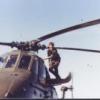
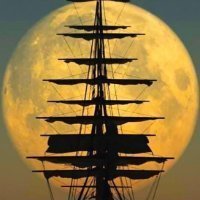


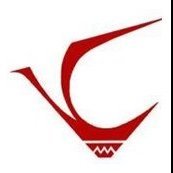
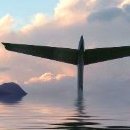


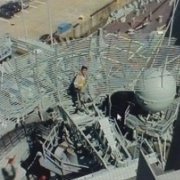
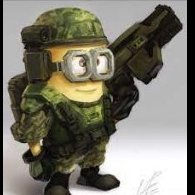
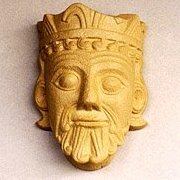
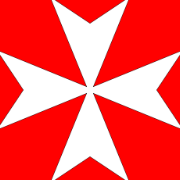
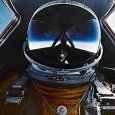



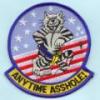


.thumb.jpg.158e2e086d45b8f96b7d93b8bee8dc21.jpg)
